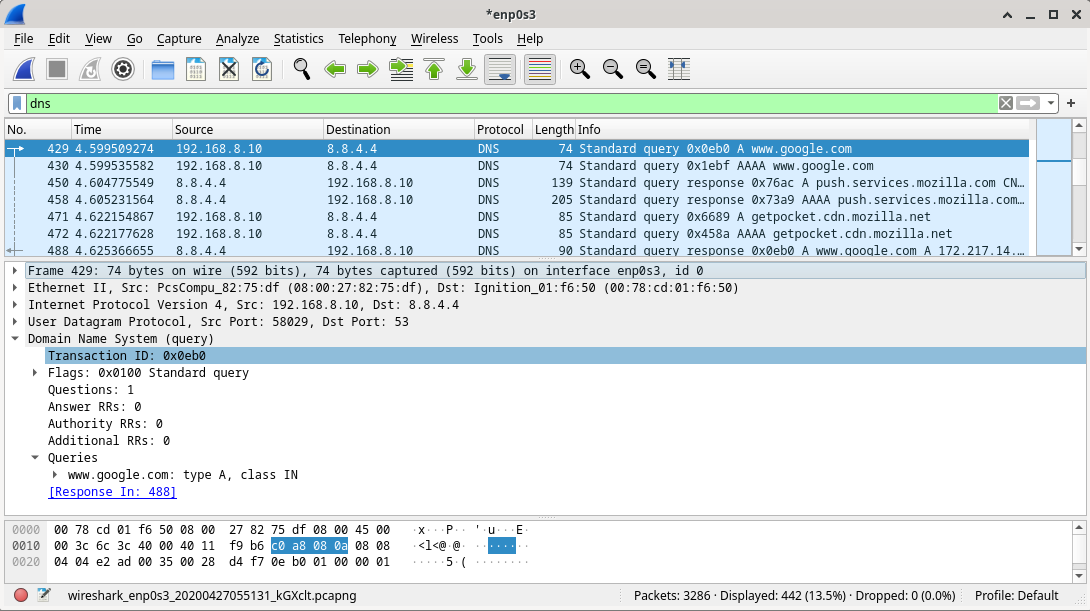

One of the most important tools in the administrator’s arsenal is the packet sniffer.Ī Packet Sniffer is a piece of software which watches data flow across the network and intercepts, logs, and analyzes network packets. To survive in a modern IT organization, the network administrators need to have a large and robust toolkit at their disposal. The network, as the backbone of every organization, is always the transport layer. As much as we hate to admit it, we understand it. (Note, these columns appear waaaay to the right in the capture and you'll have to scroll over quite a bit)Ģ. If you select the Loopback interface, you will see all DNS queries that are sent through the dnscryptproxy, but you will not see the true destination IP address for domains on the Internal Domains list it will, however, display the query and answer.If you have worked in IT as a network administrator for any length of time you know one nearly universal truth: when something is not working the first people to check with is the network team. If you select the regular network interface, you will see only queries that are on the Internal Domains list, or that did not specifically go through the dnscryptproxy.

A huge advantage of using this, is that you can sniff packets while the Roaming Client service is disabled, start the capture, and suddenly you're seeing every DNS query that the Roaming Client sends from the moment it starts, rather than starting a capture after the Roaming Client has already started.ġ. This is a lightweight and easy-to-use tool. OSX - The interface will be named ipsecX (eg.Windows - The interface is named ' Umbrella'.If the problem is suspected to relate to IP Layer Enforcement then you must also capture traffic on the IP Layer Interface. IP Layer Enforcement creates a VPN interface. mac OS An圜onnect - /opt/cisco/anyconnect/umbrella/data/force_transparent.flagĪfter doing this restart the service or your computer.macOS - /Library/Application Support/OpenDNS Roaming Client/force_transparent.flag.Windows An圜onnect - C:\ProgramData\Cisco\Cisco An圜onnect Secure Mobility Client\Umbrella\data\force_transparent.flag.Windows - C:\ProgramData\OpenDNS\ERC\force_transparent.flag.Alternatively, create the following file, depending on your OS and version of the roaming client: In some cases Umbrella support may request that you disable DNS encryption to see the DNS traffic between the Roaming Client and Umbrella cloud. In normal circumstances the traffic between the Roaming Client and Umbrella is encrypted and not human readable.


 0 kommentar(er)
0 kommentar(er)
